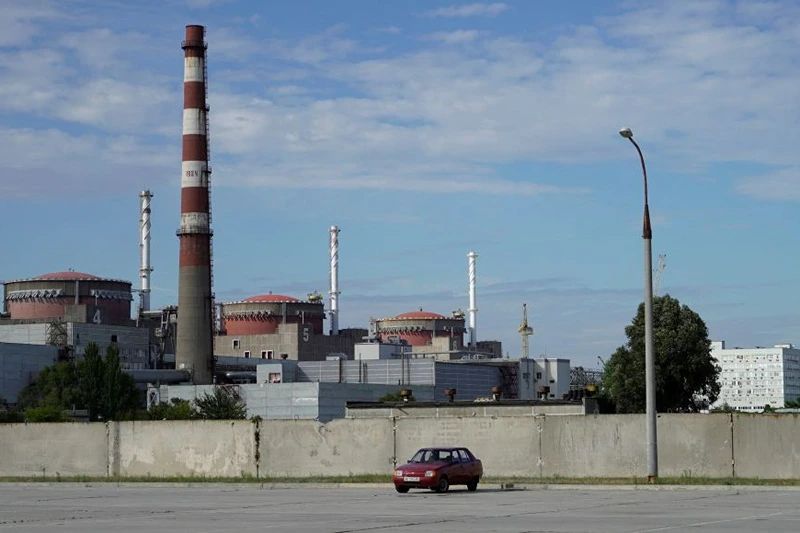

OAN Roy Francis
UPDATED 9:06 AM PT – Thursday, March 9, 2023
Russia launched a major missile attack which included more than 80 missiles and eight drones across Ukraine early on Thursday morning.
The missile barrage, Russia’s largest attack in weeks, struck dozens of residential buildings, leaving at least six people dead. The attack had also compromised a major nuclear plant according to Ukrainian officials.
“Last night, Russia attacked Ukraine with 81 missiles and 8 Shahed drones,” the Ukrainian Defense Department said. “[Thirty-four] cruise missiles and 4 drones were shot down by Ukraine’s air defense. [Eight] [Russian] missiles missed their targets.”
Lviv Governor Maksym Kozytski confirmed five people were killed as a result of the attack in the Lviv region, as well as three buildings being destroyed. The governor said that the number of deaths could rise as rescue workers work through the aftermath.
Dnipropetrovsk Governor Serhii Lysak confirmed another death and two injuries in the other strikes that were conducted.
The Zaporizhzhia Nuclear Power Plant was also affected during the attack. The plant, which is the largest nuclear plant in Europe and had previously been taken by Russia forces, lost power as a result of the attack. According to Energoatom, the nuclear state operator, the plant relies on 18 diesel generators which could reportedly run the plant for 10 days.
This is the sixth time that the Zaporizhzhia plant has lost power since the Russia forces had taken it. The plant has also been the cause for international concern due to the possibility of an explosion or a meltdown which could cause extreme destruction and devastation to the surrounding area.
Rafael Grossi, the head of the International Atomic Energy Agency (IAEA), the United Nations’ nuclear watchdog, has appealed to both sides for a protection zone around the plant, and asked for all heavy weapons to be removed from the area. The international agency had also placed teams of experts at all four of Ukraine nuclear plants to help minimize the chance of a severe accident during the war.
“What are we doing to prevent this [from] happening? We are the IAEA, we are meant to care about nuclear safety,” he said to the IAEA board of directors after Thursday’s attack. “Each time we are rolling a dice. And if we allow this to continue time after time then one day our luck will run out. This is the sixth time – let me say it again sixth time – that ZNPP has lost all off-site power and has had to operate in this emergency mode. Let me remind you – this is the largest nuclear power station in Europe. What are we doing? How can we sit here in this room this morning and allow this to happen? This cannot go on.”
After the latest attack which caused a power outage at the Zaporizhzhia plant, the IAEA released a statement pointing out the effects of the attack.
“This morning, at around 5am local time, Zaporizhzhia Nuclear Power Plant lost all off-site power when its last remaining 750 kilovolt line was disconnected, its only remaining back up 330 kilovolt line having been damaged a few days ago and under repair,” the agency said.
Nuclear power plants need to have a constant source of power in order to run their cooling systems. The cooling systems in turn help regulate the plants, and prevent them from overheating and having a meltdown. The last major nuclear meltdown to occur in that region was the Chernobyl disaster in 1986.
Ukraine’s grid operator said that power had been restored to the nuclear plant later on Thursday.





Be the first to comment